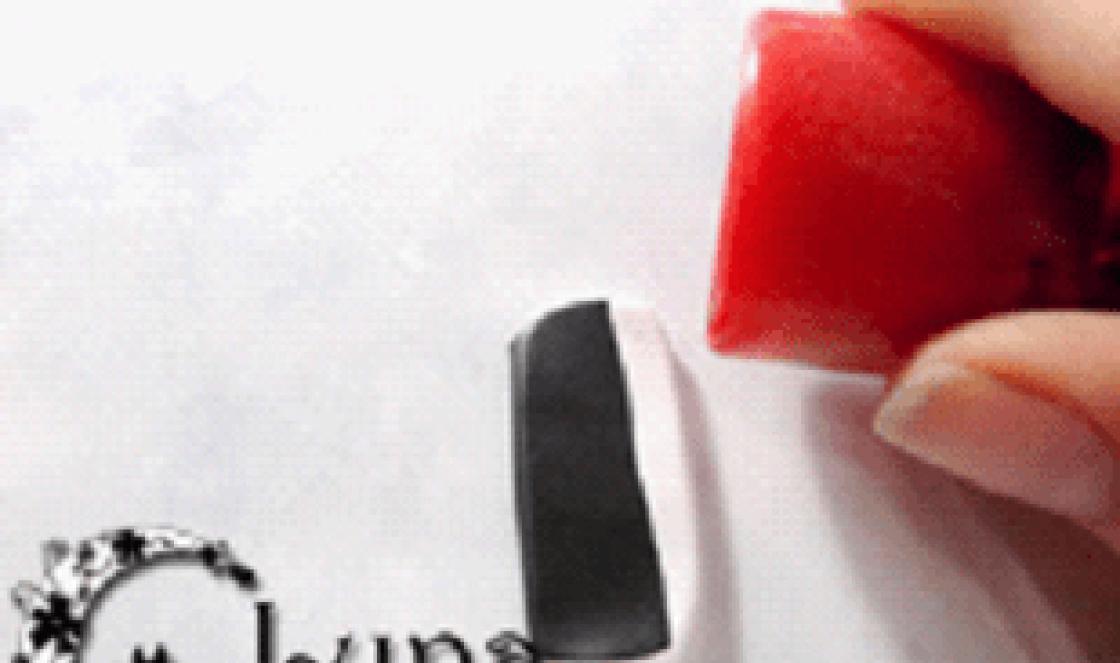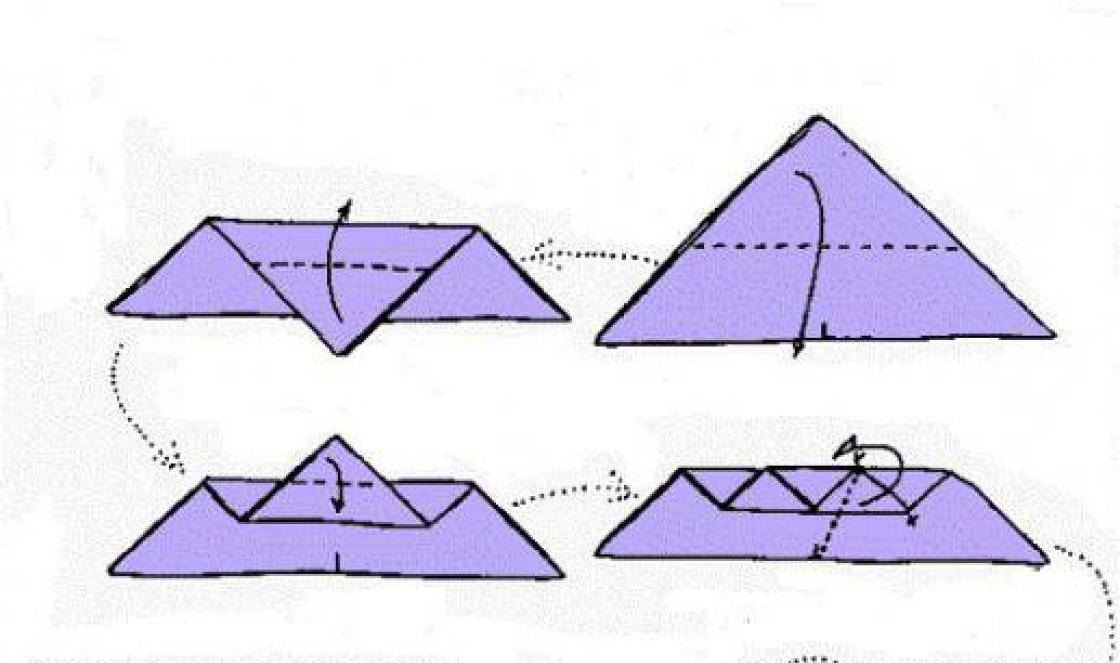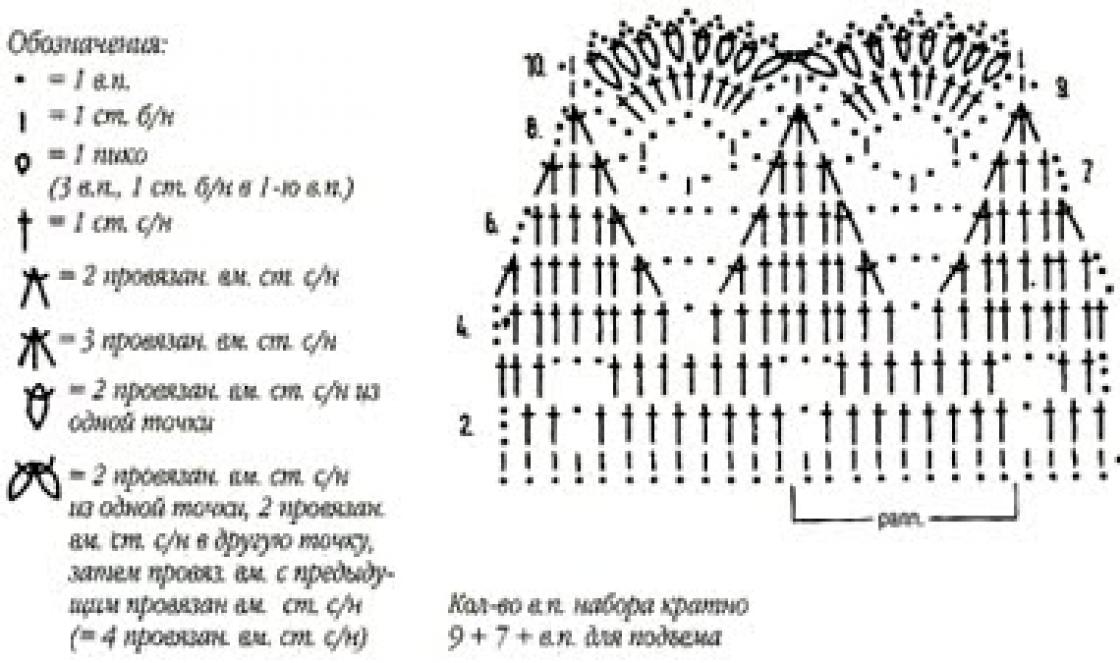Abdominal pain is ubiquitous in medical practice.
The rhythm of modern life and the peculiarities of the human diet cause all sorts of disruptions in the functioning of the gastrointestinal tract.
In other cases, there are pathological processes affecting the female reproductive system.
It is not easy for the average person to understand the causes of discomfort: they are too numerous.
The more difficult it is to distinguish harmless conditions from pathologies that threaten life and health.
In order to identify dangerous manifestations of various conditions in time and not get confused when the question concerns further actions, you need to arm yourself with some knowledge.
Left side hurts under the ribs in front: causes
Pain in the left side is an informative symptom. However, it can be due to a huge number of reasons. In the vast majority of cases we're talking about about problems with the gastrointestinal tract. In women, the situation is more complicated: pathologies of the reproductive system cannot be ruled out. What reasons can we talk about:Stomach diseases. First of all, we are talking about the notorious gastritis. Gastritis is an inflammatory lesion of the gastric mucosa. Pain syndrome with gastritis is intense, discomfort is localized in the epigastric region (in the center, just below chest) and left side. Gastric ulcers have similar manifestations. They can only be distinguished using endoscopic examination.
Colon diseases. First of all, this is “fashionable” irritable bowel syndrome. Strictly speaking, IBS is not an organic lesion of the intestines. It is caused by psychosomatic reasons, but is accompanied by a lot of discomfort. Often the pain is localized in the sigmoid colon (on the left under the ribs). Intense pain accompanies inflammation of the sigmoid colon (sigmoiditis), colitis (inflammation of the mucous membrane of the colon), neoplasms of the organ (not always malignant), colic, etc.
Pancreatitis. Inflammation of the pancreas. It is not always easy to distinguish pancreatitis from gastritis, however, pain with inflammatory damage to the gland is much stronger.
Kidney pathologies. The left kidney is located in anatomical proximity to the organs of the gastrointestinal tract, so the localization of pain cannot always be accurately determined. Kidney pathologies can cause referred pain. Among them: glomerulonephritis, pyelonephritis, urolithiasis, etc.
Pneumonia. It may seem strange, but pneumonia (especially lower lobe) is accompanied by pain in the left side.
Diseases of the cardiovascular system. Dull or burning pain in the left side and behind the sternum may indicate a heart attack, an attack of angina, or the development of coronary heart disease.
Inflammation of the spleen.
As you can see, the list is impressive. In women, there are even more reasons why the left side hurts under the ribs in front. Many problems with the reproductive system are characterized by pain:
Ovarian lesions. Inflammation, ovarian rupture, torsion. All ovarian lesions are accompanied by intense nagging pain (if the left ovary is affected, the pain radiates to the left side).
Ectopic pregnancy.
Endometriosis. It is the growth of tissue of the endometrial layer of the uterus beyond the organ. It occurs mainly in older people.
For obvious reasons, it is impossible to independently understand the sources of the problem. You need to have special medical knowledge. However, it is necessary to know how certain diseases and serious conditions manifest themselves in order to react in time.
Left side hurts under the ribs in front: associated symptoms
You need to listen carefully to your own body so as not to miss important signals. Fortunately, pain is never without companions. This facilitates diagnosis and gives the patient the opportunity to determine that something is wrong with the body.Stomach diseases are almost always accompanied by dyspeptic symptoms: heaviness in the stomach, indigestion, heartburn, and belching. Pain in diseases of the stomach is pressing, bursting. Stool disorders are rare. However, distinguishing a stomach ulcer from gastritis, as already mentioned, is not easy.
Intestinal pathologies. Accompanied by characteristic manifestations. The leading manifestation is stool disorders. In this case, there may be both diarrhea and constipation (and sometimes their alternation). The stool may contain streaks of blood, white ribbon-like mucus, or pus. Flatulence occurs without stool disturbances, but with intense release of gases. Unfortunately, the only thing that can be done when such symptoms are detected is to detect problems in the intestines. A specific disease can only be determined using endoscopic examination.
Kidney diseases. It is difficult to determine them because renal pathologies in the early stages they can masquerade as other diseases. Accompanied by urinary disorders.
Pain radiating to the jaw left hand- this is a reason to be wary. This is how heart disease manifests itself (including heart attack).
Pain in the left side under the ribs in front: diagnosis
The first thing a patient should do when discovering discomfort in the left side is to consult a doctor. You can only suppress the symptoms on your own, but not cope with the root cause. In case of high-intensity pain, if the pain is “dagger-like” in nature, do not hesitate to call an ambulance: it could be a heart attack, perforated ulcer, acute pancreatitis, etc. Many conditions pose a direct threat to life and are fraught fatal. In all other cases there is no urgency, but it is recommended to see a doctor at the first opportunity. Who to contact:Therapist (the first person to contact).
Gastroenterologist.
Nephrologist.
Cardiologist.
Gynecologist.
The diagnostic strategy is developed by the doctor based on the symptomatic complex.
In general, diagnostics includes:
Anamnesis collection (patient interview). The doctor asks standard questions regarding the patient’s well-being, his complaints, etc. Taking an anamnesis is especially important when diagnosing gynecological diseases, so you should not hide anything: this is not a case when you can be shy, embarrassed, etc. The doctor must know about the patient’s condition All.
Palpation. The doctor “probes” potentially problematic areas to identify pain reactions and determine the size and structure of organs.
Contrast radiography of the stomach and intestines.
Endoscopic studies. FGDS to assess the condition of the gastric mucosa (allows you to accurately exclude gastric neoplasms, determine the degree and nature of damage to the organ mucosa). Colonoscopy is the only possible and most informative method for diagnosing intestinal pathologies (from colitis to tumors). Laparoscopy - prescribed for suspected ectopic pregnancy (only if indicated).
Ultrasound examination. It is used to assess the condition of organs in all possible diseases.
Laboratory research. General analysis blood makes it possible to identify the presence of a focus of inflammation: leukocytosis and increased ESR are characteristic of almost any inflammation, eosinophilia accompanies autoimmune processes (including allergic processes). In children, allergic reactions can manifest as intestinal disorders, so a general blood test is especially important in examining young patients. Also, a general blood test makes it possible to distinguish an ectopic pregnancy from other types of pathological processes: pregnancy is not characterized by an increase in the level of leukocytes and ESR. A general urine test and blood biochemistry are necessary to assess the condition of the kidneys, liver and pancreas.
Cardiogram, ECHO KG.
Left side hurts under the ribs in front: treatment
If the left side hurts under the ribs in front, it is not the pain that should be treated, but its cause. It is in the hands of the patient to help himself, but it is important not to overdo it: pain can be relieved with antispasmodics (No-shpa, Drotaverine, Duspatalin, etc.). In exceptional cases (if the pain does not go away), you can take an analgesic. But this will not solve the problem. Treatment should be carried out by a specialized specialist.Depending on the specific disease, treatment can be either conservative or surgical.
Conservative treatment consists of taking several groups of medications:
Antispasmodics. They are used to relieve spasm (muscle contraction) of the smooth muscles of the organ. Among them: Maksigan, Baralgin, Spazgan, No-shpa, Duspatalin, etc. Self-administration is acceptable (within reasonable limits).
Analgesics. Intended for pain relief: Maxicold, Colfarit, Novalgin, etc. It should not be taken uncontrollably.
Anti-inflammatory drugs. Prescribed for inflammatory lesions internal organs: Ketorolac, Nise et al.
Antibacterial drugs. They are used if the disease is caused by an infection. Specific names are selected by a specialist.
Antacid drugs. The task of antacids medicines- decreased acidity of gastric juice during gastritis. Some names: Gastrofarm, Gastal, Rutacid, etc.
Carminatives. Designed to combat increased production of intestinal gases. The problem of flatulence is especially relevant for children and people suffering from gastrointestinal diseases. Prescribed: Almagel, Espumisan, etc.
Diuretics. Otherwise called diuretics. They are prescribed for confirmed kidney pathologies. Self-administration of diuretics is unacceptable: side effects develop frequently and are dangerous.
Surgical treatment is prescribed in a limited number of cases:
For tumors (benign, malignant).
If the cause of pain is a hernia (for example, a hernia of the diaphragm).
For most gynecological pathologies (ovarian torsion, ectopic pregnancy). In addition to traditional abdominal operations, V recent years Endoscopic, minimally invasive interventions are increasingly being practiced.
In case of violation of the anatomical integrity of an organ (rupture of the spleen, stomach, perforated ulcer, etc.).
Pain in the left side under the ribs in front in children
The causes of pain in children are the same as in adults. There are no major differences in either diagnosis or treatment strategy. However, according to medical statistics, pain in children is caused by three leading reasons:Intestinal colic.
Allergic reactions.
Development of appendicitis (oddly enough, in children pain often radiates to the left side).
Other reasons are less common, but they cannot be excluded. Fortunately, many gastrointestinal diseases in patients younger age are easier and are more often treated on an outpatient basis.
There are many diseases that provoke pain in the left side. Many are life-threatening. Without special medical knowledge, there is no chance to understand such a variety of pathologies, so you cannot do without the help of a doctor. Timely contact with a specialist is the key to a favorable outcome for any, even the most serious, illness.
With the development of pathologies of the internal organs of the left upper abdomen, there is often pain under the left rib in the front. What does this pain mean? What organs are in this area? What lesions cause pain in the organs specifically in the left hypochondrium? This publication will answer these questions. I would like to note right away that the possible variants and causes of diseases are described here, and only a doctor can reliably determine the disease.
Pain under the left rib in the front - causes, symptoms
Such pain can be caused by several groups of diseases, the most common of which I will dwell on in detail.
Diseases and injuries of the spleen.
Everyone has heard about the rupture of the spleen after severe blows to the abdomen falling on the upper left hypochondrium. The spleen is located close to the abdominal wall, under the left lower rib. In addition to injuries, pain in the spleen can cause infectious diseases and metabolic disorders. A separate case is a splenic infarction, when, due to rupture or blockage of the vessels of the spleen, its cells die. In addition to sharp pain when a blow to the spleen occurs, symptoms such as hemorrhages under the left rib, dizziness and pallor appear.
Pancreas.
It is located directly behind the spleen. Pancreatitis can cause similar pain, which, in addition to pain in the hypochondrium on the left, produces girdle pain around the waist. Pancreatic necrosis also manifests itself in severe excruciating pain.
Stomach.
Diseases such as stomach or duodenal ulcers, erosion, gastritis can cause pain in the left hypochondrium. Specific symptoms of the disease are indigestion, belching, heartburn, severity of pain after eating or on an empty stomach.
Heart.
Sharp burning pain under the chest occurs with myocardial infarction. It often radiates to the left hypochondrium. Associated symptoms are pallor, shortness of breath, pain radiating to the left shoulder and arm, and scapula. An ECG will help to reliably determine myocardial infarction.
Lungs and left side of the diaphragm.
The epicenter of pain is usually located on the back of the lower ribs. Pain occurs with pneumonia, tumors and other pathological processes in the lungs and diaphragm.
Other, less common, causes of hypochondrium pain on the left may be diseases of the uterine appendages, neuralgia, and disease of the left kidney.
Pain under the left rib in front - treatment
Sharp pain in the left hypochondrium is a symptom that requires immediate medical attention. You should also not put up with moderate pain, but consult a gastroenterologist, endocrinologist and surgeon.
Interesting fact
There are atypical manifestations of myocardial infarction, when pain radiates to the epigastrium, left or right hypochondrium. There are abdominal, cerebral, cerebral, painless forms. Such forms of heart attack are more difficult to diagnose.
What is on the left under the ribs?
It’s safe to say that each of us has at least once experienced pain in the left hypochondrium. And, of course, everyone who has experienced these pains would like to know what organs are located on the left under the ribs, what functions they perform in our body, and what diseases the pain that worries us may be a symptom of. The answers to these questions will be given in this article. So…
In the left hypochondrium are located:
· left half of the diaphragm;
· ¾ of the stomach (in its “hungry” state, when food enters it, it moves to the center and down);
· most of the pancreas;
· intestinal loops;
· spleen.
Diaphragm
The diaphragm is a formation consisting of muscles and tendons that separates the chest cavity from the abdominal cavity. It has holes through which large parts pass from the upper part of the body to the lower part. blood vessels(aorta and inferior vena cava) and esophagus.
Why do we need a diaphragm? First of all, thanks to this muscle the act of breathing is carried out. It works like a piston, pumping air into the lungs due to the pressure difference.
The main pathological process in the area of this organ is a diaphragmatic hernia - due to various reasons, the abdominal organs penetrate into the chest cavity through holes in the muscle and, in some cases, are infringed. The most striking example is a hiatal hernia. The main human complaints with this disease are pain in the upper abdomen (and in the left hypochondrium in particular) and frequent heartburn.
Stomach
An organ designed to accumulate, partially digest and evacuate food into the intestines. Produces enzymes that aid digestion.
Among stomach diseases, the leading place belongs to acute and chronic gastritis. Acute often occurs as a result of a person eating poor-quality food and is accompanied by intense pain “in the pit of the stomach” and in the left hypochondrium, and vomiting. Chronic gastritis is usually the result of long-term improper (rare, large portions, irrational) nutrition. It manifests itself as aching pain on the left side under the ribs, heaviness in the stomach, and nausea.
There are frequent cases of gastric ulcer - a disease in which wounds - so-called ulcers - form on the mucous membrane of the organ. The main symptom is pain of varying intensity after eating.
Pancreas
This is an organ that plays an important role in the processes of digestion and metabolism. It secretes enzymes that promote normal digestion of food, as well as the hormones insulin and glucagon, which play an important role in regulating carbohydrate metabolism in the body.
Among the diseases of this organ, the leading place belongs to acute and chronic pancreatitis (inflammation of the gland). Acute begins suddenly with acute pain in the left side, accompanied by vomiting, often diarrhea. Basically, it occurs after significant errors in diet or alcohol abuse. The main symptoms of the chronic form of the disease are dull pain in the left hypochondrium, as well as nausea and vomiting. Occurs periodically, usually after feasts with an abundance of fatty, fried and spicy foods, and alcohol.
Pain syndrome can also be caused by a pancreatic tumor, benign or malignant. Additional symptoms of these conditions are varied.
A severe disease of the gland is diabetes mellitus- a condition that occurs as a result of a deficiency of the hormone insulin, leading to disorders of all types of metabolism (primarily carbohydrate, as well as fat and protein). Usually pain under the ribs does not accompany this disease.
Intestines
It is also one of the digestive organs. This is a tube through which food passes and, as it passes, is gradually digested.
The main diseases of this organ are acute and chronic enteritis, colitis or enterocolitis (the name depends on the affected part of the intestine). Acute form More often it is of an infectious nature and is accompanied by pain in different parts of the abdomen and diarrhea. The cause of the chronic form is most often, again, poor nutrition. Patients are bothered by periodic or constant aching pain in the abdomen and stool disturbances.
Spleen
Of all these organs, the spleen lies the most superficial. It is an organ of immunity, as well as a depot of hemoglobin released from red blood cells that have died in it.
There are many diseases of this organ - abscesses, cysts, tumors. All of them are accompanied by pain in the area of projection of the organ. However, the most dangerous to human life is splenic rupture - a condition that manifests itself as sharp, intense pain in the left side and requires urgent surgical intervention.
Read also what is in the left side under the ribs of another author.
It should be remembered that most of the listed diseases can be treated if treated in a timely manner, so if any complaints arise, your best decision would be to consult a doctor.
Compaction between the ribs - causes, diagnosis and treatment
There are situations when a person feels some kind of compaction between his ribs. This can be frightening, cause some anxiety and become one of the reasons to quickly contact a doctor for examination and treatment. We will talk about what could be the causes of compactions between the ribs and treatment tactics.
Stomach pain under ribs
Abdominal pain is one of the most common complaints among patients worldwide. A considerable number of them complain that their stomach hurts under the ribs. Abdominal pain, especially acute pain, is always a very alarming symptom. When talking about abdominal pain under the ribs, one should distinguish between abdominal pain due to surgical diseases and pain due to non-surgical diseases of the internal organs.
Diseases of the gastrointestinal tract are found everywhere. According to statistics, every second person suffers from problems with the digestive system.
Most often we are talking about stomach diseases. Both pathologies of this organ and many other diseases can give characteristic symptoms ( pain under the left rib).
There are other reasons. What should you know about this unpleasant manifestation? Let's take a closer look.
Pain under the left rib in front: causes
There are many diseases that manifest this symptom. Among them:
- . The stomach is located in the upper third of the epigastric region. Gastritis is an inflammation of the stomach lining. Pain can be observed, including in the area of the left side (hypochondrium).
- Gastroduodenitis. It is a lesion of the final part of the stomach and duodenum. It is almost impossible to independently differentiate between this pathology and gastritis. Even a doctor will not be able to make such a diagnosis at first glance. It is necessary to undergo some examinations.
- (reactive, etc.). In medical practice, pancreatitis is understood as: This is the most serious disease of the listed ones, since its course is severe and death is possible.
- Injuries abdominal cavity. Bruises and ruptures of internal organs localized in the abdominal cavity are accompanied by aching pain in the area of the injury. If we are talking about pain in the left hypochondrium, the following may be affected: the pancreas, left kidney, stomach, duodenum, spleen.
- Inflammatory lesions of the left kidney. In this case, the pain is localized in the projection of the diseased organ. We can talk about nephritis, pyelonephritis, glomerulonephritis. Each of the diseases described can produce characteristic symptoms.
- . Inflammatory lesion of the gallbladder. Rarely, however, irradiation (return) of pain to the left hypochondrium is still possible.
- Cholelithiasis (gallbladder stones).
- Hepatitis of various origins. They can be mistaken for pancreatitis, since pain often radiates to the left hypochondrium, despite the fact that the organ is located on the right.
- Sigmoiditis. It is an inflammation of the sigmoid colon.
- . Often pain due to inflammation of the large intestine is localized in the left side in front.
- Lesions of the spleen.
- . It is life-threatening, since as the process develops, perforation of the stomach wall is possible with the subsequent development of peritonitis.
There are many reasons why there is pain under the left rib in the front. It is possible to understand and identify a specific disease only after undergoing a series of instrumental studies.
Associated symptoms
Concomitant symptoms play a huge role in differential diagnosis, since characteristic manifestations may suggest one or another disease. Among the symptoms:
- Pain syndrome. Characterized by varying intensity and different character. With pancreatitis, the pain is cutting, localized in the left side, and has a girdling character. The same is observed with gastritis, but the pain in this disease intensifies after eating, while pancreatic pain syndrome is constant. In other cases, the discomfort is aching, pulling.
- Dyspeptic phenomena. Nausea, vomiting, indigestion are all manifestations of stomach problems.
- . The eternal companion of gastritis and gastroduodenitis. Heartburn occurs after eating and is relieved when the stomach is empty.
- Feeling of bitterness in the mouth. Most often occurs with problems with the gallbladder.
- Feeling of heaviness in the left side and epigastric region. Heaviness in the epigastric region accompanies stomach problems.
- Urinary disorders (oliguria - rare urination in small volumes, polyuria - the opposite phenomenon).
- Pain radiating to the pubic area and external genitalia.
- Feeling of incomplete urination.
Everything described (the last four points) are symptoms of problems with the excretory system. The kidneys are probably involved.
The symptoms are extremely numerous. You need to listen carefully to your own body. Then you need to tell your doctor about all the manifestations. This will make it much easier to make an accurate diagnosis. This makes the patient’s work easier for the doctor and his life easier.
Diagnosis of pain in the left hypochondrium
Diagnosis begins with selecting the right specialist for the visit. Gastroenterologists deal with pathologies of the gastrointestinal tract. There may be problems with the excretory system. This is where urologists and nephrologists come to the rescue (not to be confused with neurologists who treat pathologies of the nervous system).
- The first thing the patient needs to do is seek advice from a general practitioner. He will give the necessary directions and help decide on diagnostic tactics. At the initial consultation, a specialized specialist will ask questions regarding the patient’s condition, the nature of the complaints, their intensity and duration. After collecting anamnesis, palpation begins.
- The doctor palpates problem areas, observing pain reactions. Through physical examination, the structure of organs and their sizes can be determined.
- At the end of the initial diagnostic measures, the specialist makes an approximate diagnosis and sends the patient for instrumental studies. Among them:
- Ultrasound diagnostics of the abdominal organs. It is carried out to identify the problem organ. Allows you to determine pathology with a high degree of accuracy. The same technique is used to assess the condition of the kidneys.
- X-ray of the stomach with a contrast agent. It is prescribed frequently and is informative in assessing the condition of the stomach.
- FGDS. Endoscopic, minimally invasive examination. Allows you to see with your own eyes the esophagus, stomach and initial parts of the small intestine. Considered the gold standard for examining the stomach.
- Scintigraphy of the liver and gastrointestinal tract. It is used to assess the functional state of the gastrointestinal tract.
The complex of these studies is sufficient for diagnosis.
Pain under the left rib in front: treatment
The answer to the question of what to do if there is pain under the left rib in the front suggests a clear answer: you need to be treated. Treatment is predominantly conservative. Only in exceptional cases is surgical intervention necessary. There are few situations when surgery is required; they can be counted on one hand:
- Pancreatitis in the acute phase with severe course.
- Perforated stomach ulcer.
- Violation of the integrity of organs due to injury or due to the influence of other factors.
- Tumors of the gastrointestinal tract.
In other cases, if there is pain under the left rib in the front, treatment is medicinal.
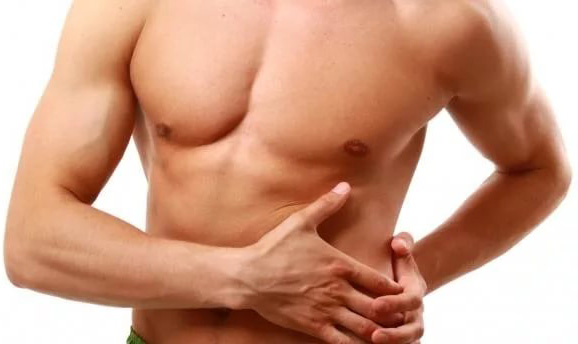
The following groups of medications are used:
- Antispasmodic drugs. They are used to relieve pain by relieving spasms of the smooth muscles of the gastrointestinal tract. These include: No-shpa, Drotaverine, Duspatalin, etc.
- Anti-inflammatory. They are used with great caution, since many have a toxic effect on the gastrointestinal tract.
- Analgesics. Prescribed for pain relief. Analgesics should be selected carefully.
Analgesics and antispasmodics can also be used at your own discretion on a temporary basis: there is a high risk of blurring the clinical picture with long-term use. You can take them only 1-3 days, before visiting the doctor's office.
The following drugs are also used:
Heptoprotectors - to protect the liver.
. Diuretic medications (diuretics for kidney problems).
. Etc.
Medicines are prescribed only by a doctor and only based on the results of diagnostic measures. Thus, the answer to the question of what to do if there is pain under the left rib in the front suggests itself.
Pain under the left rib in front: prevention
Prevention of pain under the left rib in the front is quite simple and includes a number of measures and recommendations:
- It is necessary to adhere to a balanced diet: poor nutrition (nutritional reasons) is a significant factor in the development of gastrointestinal pathologies.
- Don't get too cold.
- At the first signs of pain, you should go to the doctor without wasting time.
Pain on the left under the rib can accompany a variety of diseases. It is important to react in time and contact a specialist.
According to statistics, people turn to medical institutions for advice large number patients with complaints of pain on the left side under the ribs. This is due to the fact that several organs, vessels, muscles and lymph nodes are localized in this area. If the normal functioning of the above systems and organs is disrupted, pain of a different nature may occur.
Only in some situations can pain occur for simple reasons, such as intense physical activity. In most cases, they are signs of serious pathologies.
Possible causes of pain in the left hypochondrium
Pain in the left hypochondrium is characterized by:
- localization: front, side, left;
- by manifestation: pinching, sharp, constant, cutting, dull, etc.
First of all, it is necessary to consider possible diseases and pathologies with the nature of the pain and accompanying symptoms in order to determine the course of action to eliminate the discomfort.
Anatomy
Splenic rupture
The spleen is the largest lymphatic organ located above the stomach. If the function of the spleen is impaired, constant aching pain occurs on the left side.
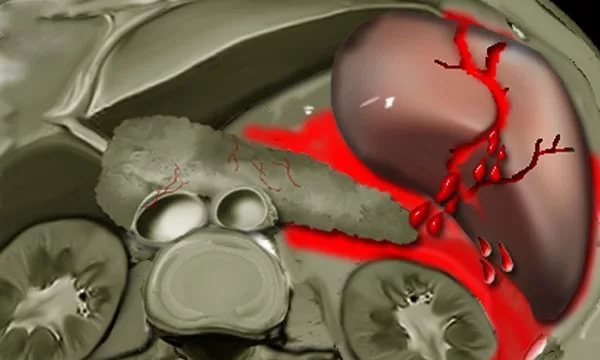
The spleen is not considered a vital organ, but any deviation from normal functioning brings severe discomfort. Sharp pain may occur when the spleen ruptures due to its increase in size.
A splenic rupture can be recognized by the following symptoms:
- blue discoloration of the skin near the navel;
- the occurrence of headaches;
- nausea;
- increased sweating;
- dizziness.
The gap is provoked by the following reasons:
- trauma and bruises;
- kidney and liver diseases;
- bearing a child;
If the spleen ruptures, it is necessary to provide assistance to the patient:
- 1. Place the person on his back carefully and without sudden movements, ensure complete rest.
- 2. Press on the sternum on the left side with your fist and maintain this position until the ambulance arrives.
- 3. To reduce the intensity of bleeding, apply ice to the sore spot.

Heaviness in the stomach
Pathologies of the cardiovascular system
Pain sensations arising from pathologies of the cardiovascular system can be different:
- stupid;
- sharp;
- piercing;
- penetrating;
- pulsating;
- burning;
- pressing;
- give to the shoulder area and to the shoulder blade on the left side.
This is due to the fact that there are a large number of possible pathologies of the cardiovascular system. Almost all of them cause characteristic symptoms:
- fatigue;
- difficulty breathing;
- nausea;
- increased sweating;
- blueness of the face in the lip area;
- burning in the chest area at the front.
If the described symptoms appear, you must immediately call an ambulance. Pain concentrated in the upper left hypochondrium may be a signal of myocardial infarction. To relieve pain before the ambulance arrives, the patient can be given validol or another sedative.

Gas formation
Intercostal neuralgia
Due to pinching of nerve endings when turning the body, taking too deep breaths and intense exercise, pain appears in the lumbar region. The duration of pain can vary:
- cutting;
- short-term;
- long lasting
Aching pain is accompanied by additional symptoms:
- weakness;
- malaise;
- headaches.
Treatment of intercostal neuralgia is carried out after a doctor’s prescription. To reduce the intensity of pain at home, you can use massage, acupressure, or place warm compresses on the painful area.
Progress of pregnancy
Nagging pain during pregnancy may occur due to the threat of miscarriage or ectopic development of the fetus. They are mainly caused by displacement of internal organs or compression of the ureter and renal pelvis.
In addition to the constant increase in size of the uterus, pain may occur due to the activity of the fetus. To relieve tension during sleep or rest, it is recommended to periodically change your position.
Urgent medical care required for prolonged pain of more than 15 minutes with increasing intensity, vaginal bleeding and weakness.
Endocrine system disorders
Pathological processes in the pancreas can cause a feeling of heaviness near the stomach, a bitter taste in the mouth and belching. Painful sensations in this case have a girdling character and are suppressed under the influence of sedatives containing enzymes.
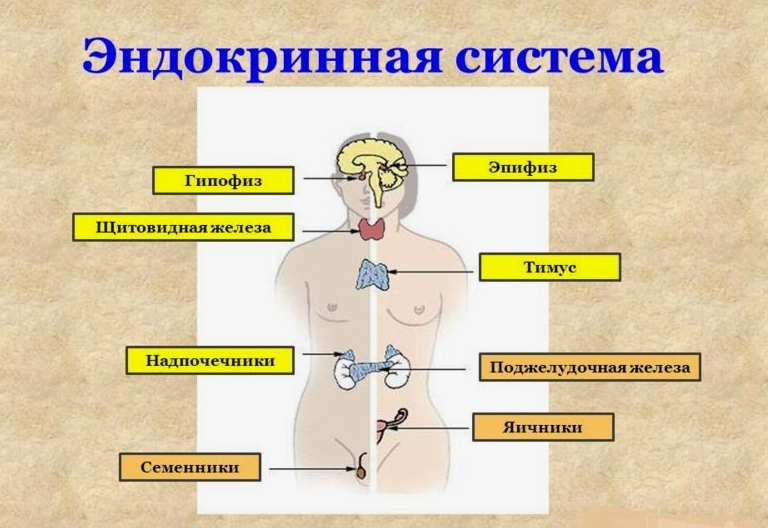
In the absence of timely treatment, there is a risk of pain becoming chronic. Under these circumstances, pain under the left rib will be accompanied by:
- increased body temperature;
- flatulence;
- intoxication of the body;
- swelling.
With the development of oncological tumors in the pancreas, pain appears only after the tumors reach an impressive size. As a result, bursting pain occurs on the left side below the ribs, the eyes and skin acquire a yellowish tint.
Digestive system dysfunction
Often after eating a person experiences pain on the left side under the ribs. This may be a manifestation of gastritis, which is characterized by other accompanying symptoms:
- malaise and weakness;
- heartburn;
- nausea and vomiting;
- flatulence;
- increased sweating.
If a patient has colitis, he will experience bloating, rumbling and indigestion. The pain comes in attacks and is characterized by spasms that are transmitted to nearby areas.
With a peptic ulcer, the pain is sharp, dagger-like, which becomes more active after eating. It is often unbearable, radiating to the back, causing fever and intoxication.
Respiratory system diseases
Left-sided pneumonia with pleurisy causes dull, mild pain. They are mainly provoked by deep inhalations and exhalations and a strong cough.
Associated symptoms of pneumonia and other pathologies respiratory system:
- dyspnea;
- increased breathing;
- blue discoloration of the nasolabial triangle.
With respiratory system disorders, it is not uncommon to turn over during sleep left side allows you to eliminate pain.
Spinal diseases
Pain that occurs on the side and back on the left side may be signs of spinal diseases:
- osteochondrosis;
- intervertebral hernia;
- arthrosis.
Pain is usually triggered by walking, physical activity, or after waking up due to an uncomfortable body position during sleep.
Gynecological disorders
In women, pain in the lower abdomen can be sudden, stabbing in nature, transmitted to the groin and radiate to the hypochondrium on the left side. These signs may indicate a ruptured ovarian cyst.
Associated symptoms:
- the appearance of intoxication;
- low blood pressure;
- increase in temperature;
- the appearance of uterine bleeding.
Classification of causes by nature of pain
When visiting a doctor, pain can be described by its nature, degree of intensity and location. Doctors divide all pain into several types of pain in the left hypochondrium. Pain happens:
- aching and dull;
- sharp and sharp;
- piercing;
- pulling;
- pulsating.
Each pain syndrome includes several possible disorders. They can occur as a response of the body to disrupted vital processes.
Stitching pain
Stitching pain is usually provoked by physical activity and sports activities. Characteristic feature pain syndrome is that it can occur even in completely healthy people. This is explained by the fact that intense physical activity was applied suddenly without prior warm-up. The reason lies in the inability of the body to quickly rebuild and adapt to accelerated blood circulation.
To eliminate pain caused by physical activity, necessary:
- relax;
- take a deep breath;
- bend over as you exhale and press your palm onto the painful area.
If stabbing pain occurs in the area under the left rib in the absence of physical activity, damage to the left kidney is suspected. The cause may be pyelonephritis or urolithiasis. These cases are characterized by pain from the back. Associated symptoms:
- frequent urination;
- feverish condition;
- weakness;
- elevated temperature.
When kidney stones move stabbing pains become sharp and cutting. This is a signal that you need to urgently seek help from a doctor.
Dull pain
An aching dull pain is a harbinger of heart attack, which indicates the development of coronary artery disease. In this case, pain often worsens at night and deprives a person of sleep.
In addition to a heart attack, there are suspicions of:
- cholecystitis;
- peptic ulcer;
- gastritis;
- colitis.
In addition to pain, there are other symptoms indicating the above-described diseases of the gastrointestinal tract:
- stool disorder;
- weakness;
- nausea;
- poor appetite;
- discomfort.
All these symptoms should not be ignored, because there is a risk of developing serious complications in the absence of drug treatment.
It's a dull pain
Constant aching pain is a likely consequence of the following conditions:
- intestinal pathologies (enteritis, colitis);
- lesions of the left lung (pleurisy, pneumonia);
- injury or rupture of the spleen;
- inflammation of the left appendage;
- development of malignant neoplasms in the liver or pancreas.
Aching pain is one of the symptoms of intercostal neuralgia, cardiomyopathy, heart attack and accompanies a diaphragmatic hernia.
Drawing pain
Nagging pain usually occurs during the course of infectious diseases or due to a disorder of autoimmune processes. One possible cause is hepatitis, in which pain worsens after eating heavy and fatty foods.
Other possible reasons- enlargement of the spleen or chronic liver damage, which causes a feeling of heaviness in the abdomen. In the absence of drug therapy, splenic rupture or liver cirrhosis are possible, respectively.
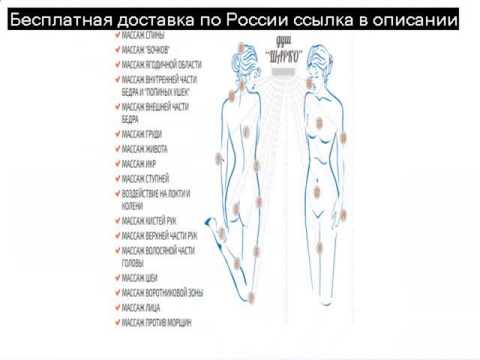
Dagger pain
Acute pain can be a sign of dangerous complications. The following are possible causes that require immediate help:
- strangulation of a renal cyst;
- perforation of small intestinal loops;
- exacerbation of pancreatitis;
- rupture of the renal pelvis or spleen;
- development of myocardial infarction;
- perforated stomach ulcer.
These pathologies cause unbearable pain in the patient, up to shock and loss of consciousness. Similar signs appear due to serious injury and rupture of internal organs.
Throbbing pain
In acute pancreatitis, throbbing pain occurs, radiating to the left hypochondrium. This condition is life-threatening. Accompanied by pancreatitis:
- increased temperature;
- swelling;
- bloating;
- vomiting bile;
- diarrhea.
To alleviate the condition, the patient is advised to bend over. This will reduce the intensity of pain.
If the patient does not take action, then the throbbing pains become girdling, the urine darkens and the feces become discolored. If seizures occur, it is necessary to urgently call ambulance, because further treatment takes place only in a hospital.
Treatment
Due to the fact that pain in the left hypochondrium can be caused by various diseases, it is necessary to conduct clinical examinations. Only after establishing the exact cause can we proceed to treatment of the pain syndrome.
It is worth noting that only in small cases, pain in the left hypochondrium can be caused by non-serious pathologies. Most causes carry a serious threat of complications. Therefore, it is imperative to consult a doctor.
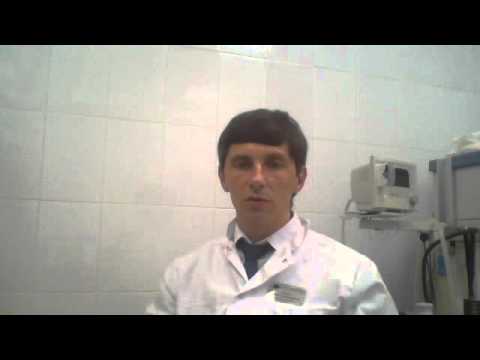
Conclusion
Pain in the left hypochondrium can be of a different nature and arise for many reasons. In almost all cases, they can serve as the first signs of serious pathologies in the human body.
In any case, you must seek help from qualified specialists. Especially if the nature of the pain changes dramatically: the intensity increases, periodic pain turns into constant.
And a little about secrets...
If you have ever tried to cure PANCREATITIS, if so, you have probably encountered the following difficulties:
- drug treatments prescribed by doctors simply do not work;
- replacement therapy drugs that enter the body from the outside help only for the duration of use;
- SIDE EFFECTS WHEN TAKING TABLETS;
Now answer the question: Are you satisfied with this? That's right - it's time to end this! Do you agree? Don't waste your money on useless treatment and waste your time? That is why we decided to publish THIS LINK to the blog of one of our readers, where she describes in detail how she cured pancreatitis without pills, because it has been scientifically proven that pills cannot cure it. Here's a proven method...


